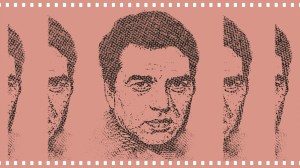Footloose in a Forgotten Land
At Dholavira, before we turned and moved towards the Harappan remains, a herd of camel appeared as if out of nowhere, grunted and wheezed it...

At Dholavira, before we turned and moved towards the Harappan remains, a herd of camel appeared as if out of nowhere, grunted and wheezed its way along the side of the road and down into a low land, dragging a cloud of dust with plundering hooves, carrying light on its back like a load of merchandise to a forgotten king.
A signboard along the road ahead informed us that we had reached. But I couldn’t “see” the ruins. Nothing was visible but undulating hillocky land, a few tents and a dozen or so lines of excavation workers trailing up and down slopes. The watchman bounded up to the car and informed us that we couldn’t take pictures. ‘‘Don’t take photographs. No photographs. You hear? No photographs. And don’t bend down and pick up even a stone. Everything is precious here, you heard what I said? Every single stone is precious here.’’
He took his job so seriously that I began to appreciate the effort he was making. He sensed this and relaxed, ambling along, taking us on a guided tour around the massive site that slowly revealed itself. What had initially appeared to be mere hillocks and ditches slowly transformed themselves into remnants of an extinct civilisation… in many places, the earth fell away to reveal walls, homes, playgrounds — complex and organised town planning including water storage systems, sophisticated drainage networks, spaces for recreations, promenading. Around me lay the insides of homes now exposed to the elements — broken pots, cold fireplaces.
‘‘This place is called Kotada by the local people,’’ said the amiable watchman, before he launched into an impressive commentary as we walked along. ‘‘It’s one of the two largest Indus Valley settlements in India and the fourth or fifth biggest in the whole region including Pakistan. From north to south it is six hundred metres, and from east to west it is seven hundred and fifty metres. And there are walls all around it,’’ he stretched both his arms out dramatically. ‘‘All around it, can you believe that? Come on, I’ll show you more.’
There were presences around me that I could not understand. I let them be and walked on with the man and his voice that unravelled, with the spirit of an archaeologist, the wonder of a deserted town uncovered from the layers of time.
It was difficult to keep pace with the man as he walked hurriedly along, obsessed by the sheer wonder of what lay around him. But the more I listened to him, the more I was witnessing not just the crumbled skeleton of a lost city but the vestiges of a civilisation, fragmented pages from the great book of human culture. I felt privileged to be stand- ing there, in that place, at that time, the same way I felt privileged to have been given the opportunity to have experienced the people and places in the land of Kutch.
I stood beside him on a hillock and looked out across the flat greyness of the Great Rann, westwards, in the direction of Khavda. And north-westwards, far out at the miraged horizon beyond that last frontier lay Flamingo City, the place where thousands of flamingos courted each other, mated, laid and hatched their eggs, rafting their five or six day old chicks out on saline water-sheets, travelling with them until they learnt to fly — pink and white clouds soldering land and sky with the haze of life.
The ornithologist, Dr Salim Ali, wrote in his introduction to his early 20th century study of the birds of Kutch, ‘‘The chief interest of Kutch ornithology lies in the geographical position of this narrow strip of land relative to the mighty tide of migration that sweeps into India from beyond its northern and north-western boundaries, and out again, in the autumn and spring of each year. Apart from the migrants that come to spend the winter here and in peninsular India, the area is further important in that it lies on the extreme fringe of a broad stream of through migration that flows from Central and Northern Asia in a south-westerly direction in autumn and vice versa in spring.”
Standing there on the crossroads I felt a part of all that had passed that way, down the corridors of time and space. And for the first time in all my journeys through Kutch, I felt a stranger no more, but one of the many travellers who pitched tent and left with the dawn, leaving behind the cold ashes of a fireplace and a few scattered foot-prints that would be swept away by the levelling winds of the Great Rann.
Extracted with permission from Rupa & Co.
- 01
- 02
- 03
- 04
- 05































